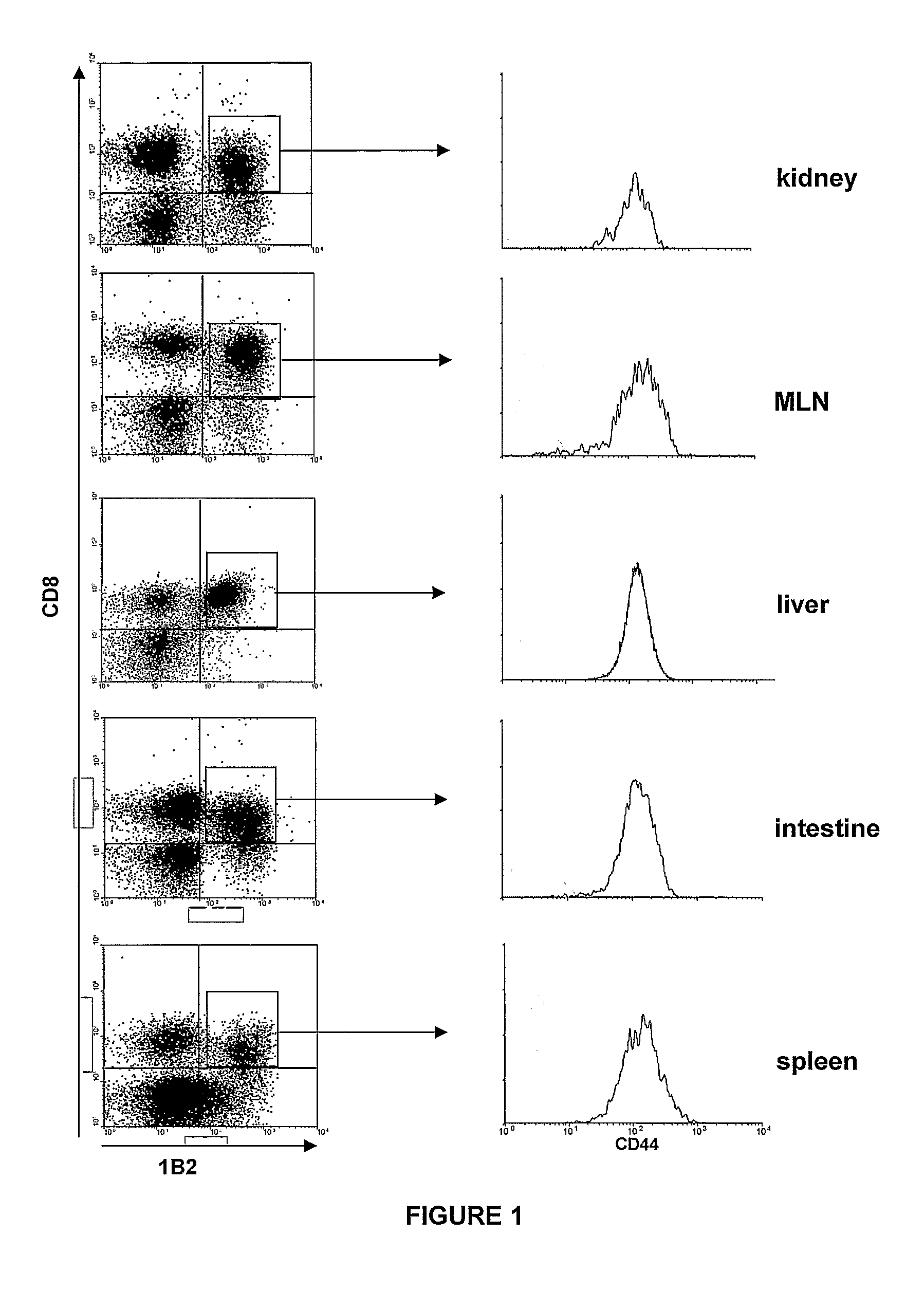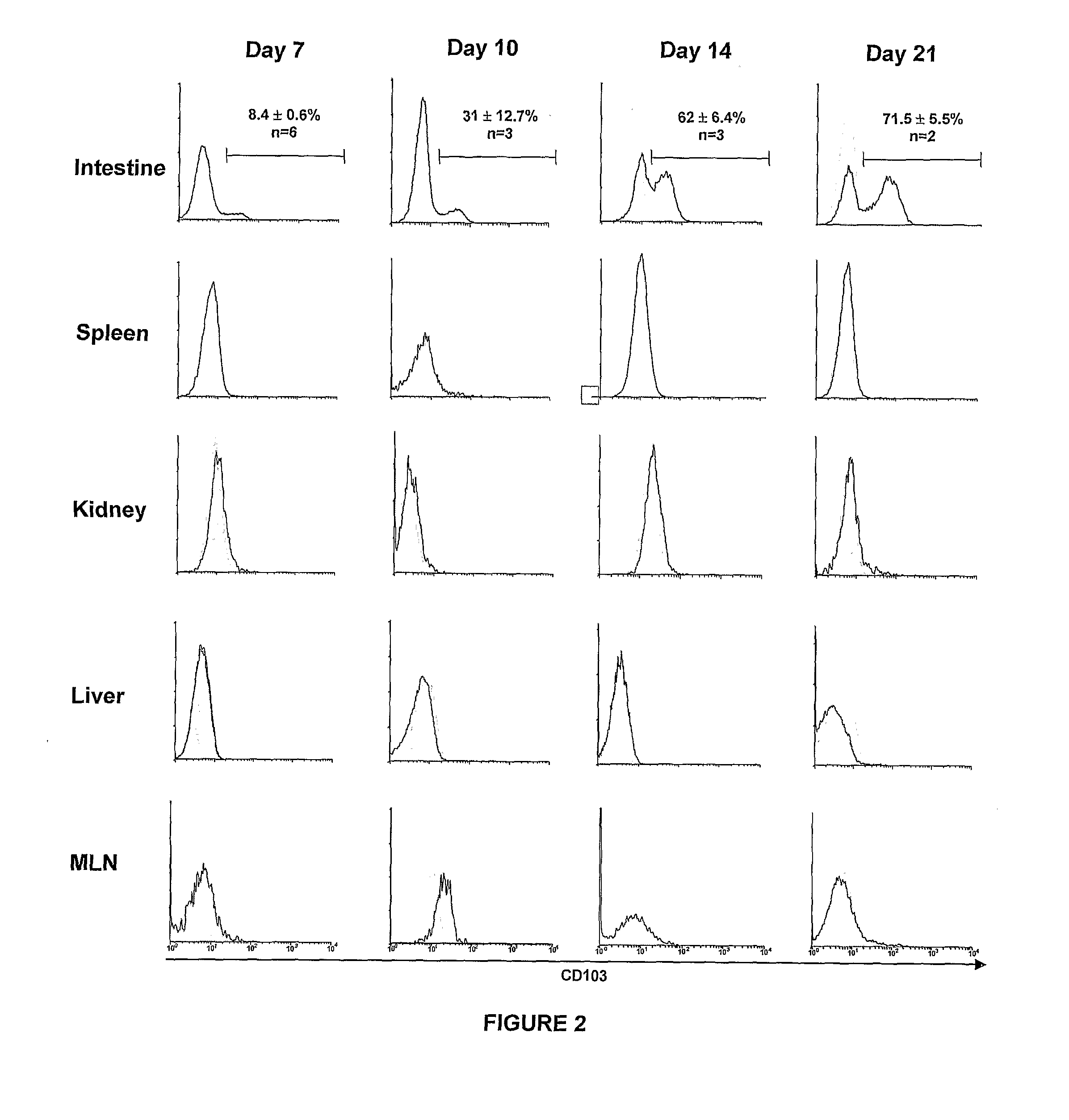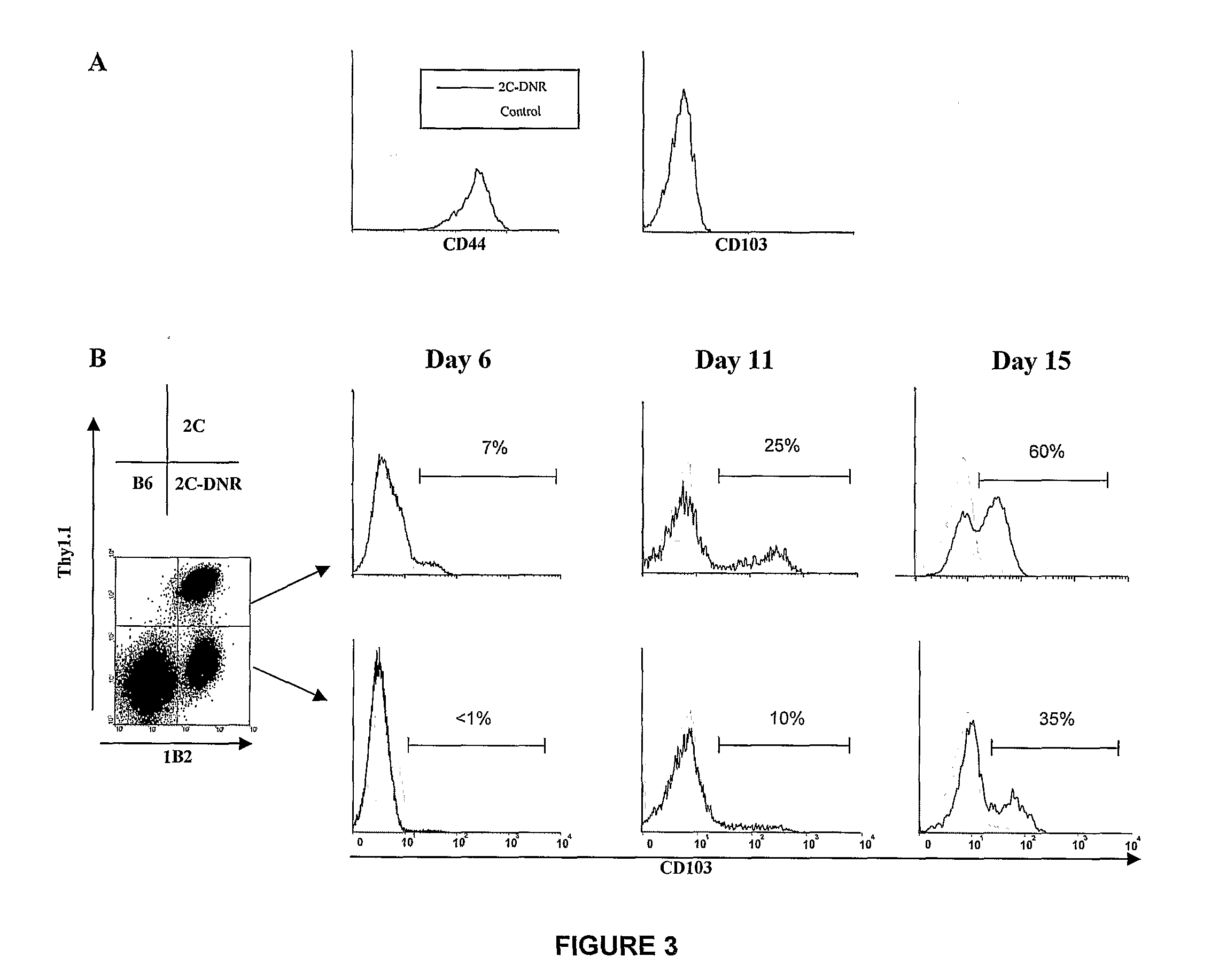Methods of Treating Graft Versus Host Disease
a technology of host disease and graft, which is applied in the field of treating graft versus host disease, can solve the problems that the gvhd treatment option of not considering the ablation of all graft derived t cells is not considered, and achieves the effect of reducing the activity of cd103
- Summary
- Abstract
- Description
- Claims
- Application Information
AI Technical Summary
Benefits of technology
Problems solved by technology
Method used
Image
Examples
example 1
Assessing the Role of CD103 in Graft Versus Host Disease
[0126]Gut-specific Expression of CD103 by hsCD8eff—To determine if (hsCD8eff) populations express CD103, lethally irradiated BALB / c (Ld+) mice received 10×106 BMC and 10×106 SC from C57BL / 6 (B6) (H2b) donors plus trace numbers of spleen cells from 2C TCR-transgenic (B6) mice. Peripheral CD8+ cells from 2C mice express a TCR with specificity for H-2Ld, which is readily detected using a mAb (1B2) directed to the clonotypic 2C TCR. Thus, use of mAbs to CD8 and 1B2 in multi-color FACS analyses allowed the phenotypic attributes of donor CD8 effector populations targeting host Ld (host-specific; CD8+1B2+ cells) to be monitored in vivo during the course of GVHD.
[0127]Prior to transfer, the vast majority of host-specific CD8+ T cells (1B2+CD8+) contained within the inoculum were CD44−CD11aloCD62Lhi indicating a naive phenotype (data not shown). FIG. 1 shows that, following adoptive transfer into lethally irradiated recipients, 1B2+CD8+...
example 2
Separability of GVHD vs. GVT Effects Mediated by CD8+ T Cells
[0138]Bone marrow cells and purified CD8+ T cells from CD103− / − or wild type (WT) BALB / cJ (H-2d) mice were adoptively transferred into lethally-irradiated A / J (H-2a) mice together with the A / J fibroblast sarcoma (SaI / N). Incidence of GVHD and GVT was observed and target organs were assayed by histology and flow cytometry. Donors were primed with 1×107 A / J SC i.p. at day −5. FIG. 9 shows that CD8+ T cells from wild type BALB / cJ mice previously primed to A / J alloantigens readily transferred severe gut and liver GVHD (75% mortality at 3 months) (closed circles), and greatly inhibited tumor growth (17-fold reduction of mean tumor volume vs. control) (data not shown). In contrast, primed CD8+ T cells from CD103− / − mice exhibited only mild to undetectable GVHD (23% mortality at 3 months) (open circles), but still efficiently inhibited tumor growth (20-fold reduction vs. control) (data not shown).
[0139]In a separate experiment, F...
example 3
Selective Depletion of CD8+ T cells in Bone Marrow
[0140]To test the ability to selectively destroy CD8+ T cells, we conjugated the M290 antibody with saporin to produce an anti-mouse CD103-immunotoxin (M290-SAP). The M290 is a rat IgG2a monoclonal antibody that blocks interaction of CD103 with its ligand, E-cadherin (Karecla, P. I., et al. Eur J Immunol 25:852-856 (1995); Roberts, K., and P. J. Kilshaw, Eur J Immunol 23:1630-1635 (1993), which are incorporated by reference). To date, however, the M290 antibody has not been shown to deplete CD103-expressing cells in vivo.
[0141]C57BL / 6 mice were injected i.p. with either PBS (0.5 ml) as control only or with (A) or with 100 μg of the M290-MAP in 0.5 ml of PBS. After 3 days, cells were harvested from the intestinal epithelium (IEL), spleen or mesenteric lymph node (MLN), and subsequently subjected to two-color FACS® using mAbs to CD8 and CD103. Within three days, post injection, CD8+ T cells were depleted in all compartments examined in...
PUM
| Property | Measurement | Unit |
|---|---|---|
| Level | aaaaa | aaaaa |
Abstract
Description
Claims
Application Information
 Login to View More
Login to View More - R&D
- Intellectual Property
- Life Sciences
- Materials
- Tech Scout
- Unparalleled Data Quality
- Higher Quality Content
- 60% Fewer Hallucinations
Browse by: Latest US Patents, China's latest patents, Technical Efficacy Thesaurus, Application Domain, Technology Topic, Popular Technical Reports.
© 2025 PatSnap. All rights reserved.Legal|Privacy policy|Modern Slavery Act Transparency Statement|Sitemap|About US| Contact US: help@patsnap.com



